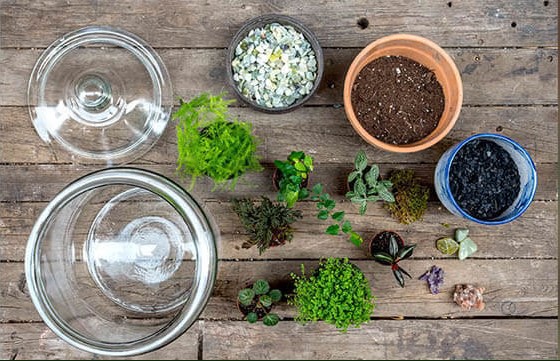
Creating a terrarium is a rewarding hobby, but the cost of supplies can be a barrier for some. But what if I told you that you could build a beautiful and thriving terrarium entirely for free?
In this article, I’ll guide you through the process of creating a DIY terrarium using only readily available, free materials. I’ll explore how to source your container, soil, plants, and decorations without spending a dime.
Finding Your Free Container
The most challenging aspect of a free terrarium build is often finding a suitable container. Here’s where resourcefulness comes in:
Local Businesses: Contact your local fish and chip shops or other food businesses that use glass jars. Many are happy to give away their empty jars, and you might even find some unique shapes.
Upcycling: Look around your home for repurposed containers. An old jar, vase, or even a cut-off wine bottle could serve as a beautiful terrarium base.
For more detailed information on choosing the best containers for your terrarium, check out my Container Choosing Guidelines.
Gathering Free Plants
The natural world offers a wealth of potential terrarium plants. Here are some suggestions:
Dog Violets: These common, resilient plants are found abundantly in urban areas.
Ivy Leaf Toad Flax (Cymbalaria Miralis): Another widespread plant, perfect for adding a touch of greenery.
For more detailed information on choosing the plants for your terrarium, check out my Choosing The Right Plants.
Collecting Free Substrate and Drainage
Moss: Look for patches of loose moss on forest paths. Remember to collect only small amounts and leave some behind for regrowth.
Soil: Find a churned-up molehill or a recently disturbed area of soil. This will save you digging into frozen or hard ground.
River Rocks: Explore a local stream or riverbed for smooth, water-worn stones for drainage.
Building Your Free Terrarium
Clean your container: Thoroughly wash your chosen container to remove any residues or odors.
Create a drainage layer: Fill the bottom of your container with a layer of river rocks. This will help prevent the soil from becoming waterlogged.
Add soil: Layer the prepared soil on top of the drainage layer.
Plant your chosen plants: Gently place your chosen plants into the soil, making sure to trim the taproots for optimal growth.
Arrange decorative elements: You can add moss, fallen leaves, or even small shells for a more natural and engaging look.
For more detailed information on making terrarium you can read Building Your Own Terrarium: Step-By-Step.
Creating a terrarium from free materials is not only an eco-conscious choice but also a rewarding experience. It allows you to connect with nature and appreciate the beauty of everyday materials.
So, get outside, explore your surroundings, and start building your own free terrarium today!